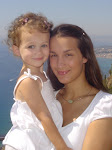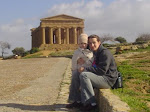Before reading chapter two I asked myself what group I considered myself apart of, I am a member of my family therefore I thought I would write about what makes me a member and how it translates into a folk group. After reading the chapter I realized throughout my life I have been apart of several folk groups and could identify with those mentioned in the chapter; “family, school, and occupational groups” (44). Although the occupational group was one that was constructed formally with many guidelines and rules, it also encompassed aspects of informal lore which enables it to be included into a folk group.
First and foremost I was born into my family, which holds many traditions, sayings, and stories. A tradition that has held strong for many years is the tradition of staying overnight on Christmas Eve at the home of my maternal grandparents. I remember as a little girl watching movies and making memories on Christmas Eve and waking up early, before sunrise, to the family room filled with presents under the tree. All of the grandchildren would sleep in sleeping bags on the floor in the family room with the tree lights lit over night to help Santa find his way. When I was six or seven years old I saw Santa in the middle of the night putting presents under the tree. I told everyone the next morning, and they said it was amazing and they believed me, jokingly. Years later, I saw a picture of my grandmother dressed up in a Santa costume and put the pieces together, she confessed and now it is a story told every Christmas.
School is another group I can associate myself as being a member of through extracurricular activities. Although it was years ago the association with cheerleading, basketball, and cross country is something I was once apart of and will remain connected to through the memories of camps, songs on the bus traveling to away games, nicknames, and jokes told. I was also crowned Homecoming Queen my senior year and was intiated into the tradition of crowing the queen which identifies me into a small group of currently only forty one women.
The occupational group I was a member of was that of the United States Navy. Although it was quite formal and integrated with rules and guidelines, underneath the layers of formality and militant behavior lore existed in many forms, informally. For example, ways in which our uniform was taught to be tended to, compared to the faster, easier ways passed down informally by the more seasoned was something I was taught early in. Also, every hospital I worked in had a myth to be told about the “night crew” (ghosts), which is something I myself recall telling.
Now, I am currently apart of my very own family group; myself, my husband and my daughter. We have our “own system of appropriate and inappropriate behavior, of narratives that illustrate and teach family values, of rituals that celebrate belief that those outside our family would not be able to clearly connect to” (31). I intend to create many more expressions of our family’s values, beliefs and traditions to pass on informally to teach and connect the members of our now family of three and in the future family of more.
“This blog entry is my response to the number two reflection question.”
Sims, Martha C., and Martine Stephens. Living Folklore An Introduction to the Study of People and Their Traditions. Logan, Utah: Utah State University Press, 2005.
Sunday, September 30, 2007
Sunday, September 16, 2007
Hope Chest (In Response to Lauren Peyton's Post)
After reading Lauren Peyton’s post from the Chapter One Reflection question about her mother’s hope chest, I could not help but think of my own. When I was fifteen my grandparents gave me a hand made cedar hope chest containing things I would need after graduation, typical housewares. The items inside the hope chest were replaceable items to get me started after leaving my parents home, but the chest is something I still use and cherish today.
After I took everything out to use in my first apartment, I began filling it up with treasures. It has been thirteen years since my chest was given to me and within those years I joined the military, moved out of the country twice, got married, and had a baby. My chest is half full of treasures from my wedding gown, my daughters little hospital ID bracelet, and even a stick of gum from Japan. No matter the size or perhaps insignificance to some, the things inside my hope chest hold memories for me and my family and we will continue to place items of our journey into the chest. Hopefully one day my daughter will think of my hope chest as Lauren has thought of her mother’s as an unchanging, fantastic chest filled with memories and laughter.
This is my first peer review posting.
After I took everything out to use in my first apartment, I began filling it up with treasures. It has been thirteen years since my chest was given to me and within those years I joined the military, moved out of the country twice, got married, and had a baby. My chest is half full of treasures from my wedding gown, my daughters little hospital ID bracelet, and even a stick of gum from Japan. No matter the size or perhaps insignificance to some, the things inside my hope chest hold memories for me and my family and we will continue to place items of our journey into the chest. Hopefully one day my daughter will think of my hope chest as Lauren has thought of her mother’s as an unchanging, fantastic chest filled with memories and laughter.
This is my first peer review posting.
The Tree House (Encounter 1)
Folk architecture tradition is in many ways seen as Igloos, Teepees, Sweat Houses, and perhaps many others that have not been brought to my attention. I asked myself, is a tree house apart of this genre? Tree houses are built without the involvement of professional architects or builders therefore they are granted admission into the genre of traditional folk architecture. Of course there are those tree houses that are built with plumbing, electricity and stand out as possibly another house on the block; those are not the kind of tree houses elected into the folk tradition. While researching the history of tree houses I found some interesting historical information about the use, need and creation behind the tree house.
For many of us, a tree house was something we built in the back yard as a means to hide from our parents, other kids and allow our imagination to run wild. When I was ten I had two best friends who happen to be sisters. The three of us built a tree house with the help of their father in their backyard. We painted the tree house blue like water, with sharks on the sides, to keep away the enemies. Inside we had two windows, one on each side, carpet, a chair and just enough space on the floor that we could all sleep in our sleeping bags, which we did often. Their father would let us run an extension cord out to the tree house so we could have a lamp for light at night. Building the tree house was an experience I will never forget. Their father actually video taped us while we were building. We were so proud of the hard work that we put into the tree house. We still talk about the time when the three of us built a tree house and how funny we look on the video.
For us, the tree house was a place for us to play, but for others long ago it was a safe house, for “mankind has long been dependent on trees for shelter; food, fuel and spiritual links are equally deep-rooted” (Harris). Tree houses were built and used as homes by the “people in the South Pacific and Southeast Asia” (Pearson). As years have passed many different tree houses have evolved and have become quite famous; The Swiss Family Robinson with their shipwreck tree house, the Ewoks had a place to call home as they lived in tree houses. Today tree houses are making a comeback, but not exactly in the same style as what we remember them to be. I myself have spent the weekend in a tree house hotel. We had to climb stairs to reach the entrance and inside was the actual tree itself, bark and all. The tree sprang up through the roof top and had a type of plastic surrounding the opening. It was impressive to say the least and quite beautiful. Aside from the more elaborate of today’s tree houses, the tradition of tree house building and the feelings associated with simply being inside a tree house will live on regardless of the size and shape.
This post is my response to the Architecture Encounter Project.
Harris, John. “TreeHouse Company.” Treehouses Past & Present. Tree House History. 2003-2005. 15 Sept. 2007 <http://www.treehouse-company.com/history.htm>.
Pearson, David. “Mother Earth News.” Home Sweet Treehouse. August/September 2001. 15 Sept. 2007 <http://www.motherearthnews.com/Nature-and-Environment/2001-08-01/Home-Sweet-Treehouse.aspx>.
For many of us, a tree house was something we built in the back yard as a means to hide from our parents, other kids and allow our imagination to run wild. When I was ten I had two best friends who happen to be sisters. The three of us built a tree house with the help of their father in their backyard. We painted the tree house blue like water, with sharks on the sides, to keep away the enemies. Inside we had two windows, one on each side, carpet, a chair and just enough space on the floor that we could all sleep in our sleeping bags, which we did often. Their father would let us run an extension cord out to the tree house so we could have a lamp for light at night. Building the tree house was an experience I will never forget. Their father actually video taped us while we were building. We were so proud of the hard work that we put into the tree house. We still talk about the time when the three of us built a tree house and how funny we look on the video.
For us, the tree house was a place for us to play, but for others long ago it was a safe house, for “mankind has long been dependent on trees for shelter; food, fuel and spiritual links are equally deep-rooted” (Harris). Tree houses were built and used as homes by the “people in the South Pacific and Southeast Asia” (Pearson). As years have passed many different tree houses have evolved and have become quite famous; The Swiss Family Robinson with their shipwreck tree house, the Ewoks had a place to call home as they lived in tree houses. Today tree houses are making a comeback, but not exactly in the same style as what we remember them to be. I myself have spent the weekend in a tree house hotel. We had to climb stairs to reach the entrance and inside was the actual tree itself, bark and all. The tree sprang up through the roof top and had a type of plastic surrounding the opening. It was impressive to say the least and quite beautiful. Aside from the more elaborate of today’s tree houses, the tradition of tree house building and the feelings associated with simply being inside a tree house will live on regardless of the size and shape.
This post is my response to the Architecture Encounter Project.
Harris, John. “TreeHouse Company.” Treehouses Past & Present. Tree House History. 2003-2005. 15 Sept. 2007 <http://www.treehouse-company.com/history.htm>.
Pearson, David. “Mother Earth News.” Home Sweet Treehouse. August/September 2001. 15 Sept. 2007 <http://www.motherearthnews.com/Nature-and-Environment/2001-08-01/Home-Sweet-Treehouse.aspx>.
Saturday, September 8, 2007
My Daughter and her Terrible Jokes (Ch. 1 Reflection)
Folklore is apparent in many forms which brought me to speculate what folklore exists in my life, and thought it challenging to come up with specific lore that I thought was considered folklore. After reading the first chapter in our assigned text, I was able to grasp onto the idea and notion of what folklore entails. Given the definitions of folklore, I want to share my current, daily relations of folklore with you.
Expressions of folklore are evident in my life more so through interactions with my four and a half year old daughter, Zoe. The folklore identified that is exhibited almost daily is in the form of jokes. My daughter has a knack for telling terrible jokes. She is at the age of joke telling, but does not completely understand the punch line, or where the punch line should be placed within the joke. Zoe would tell a joke, and then ask if it was funny. My husband and I would pretend her jokes were funny, but after the one millionth time of hearing the same not so funny joke, we were determined to teach her how to properly tell a joke. I found an old children’s book that contains jokes that have been told for years, for example the knock, knock joke about the banana and the orange. She still can not quite get the wording down with this particular knock, knock joke but it makes it even more amusing that she just can not get it right. We read the jokes to her from the book which allowed us to remember jokes that we could share with her.
Through the search for easy kid’s jokes, this has provoked my husband to tell jokes. I am not the greatest joke teller; this is possibly where my daughter gets her not so funny joke telling ability. The spark of telling jokes has allowed me and my husband to look for funnier jokes; it is now a competition which is quite hilarious. Our search has also branched over into tongue twisters, which Zoe loves. Old jokes are the best but there are some pretty good new ones. Here is the newest joke from my daughter: What do you call a pig that karate’s? A pork chop.
This blog entry is my response to the Chapter One Reflection Question.
Expressions of folklore are evident in my life more so through interactions with my four and a half year old daughter, Zoe. The folklore identified that is exhibited almost daily is in the form of jokes. My daughter has a knack for telling terrible jokes. She is at the age of joke telling, but does not completely understand the punch line, or where the punch line should be placed within the joke. Zoe would tell a joke, and then ask if it was funny. My husband and I would pretend her jokes were funny, but after the one millionth time of hearing the same not so funny joke, we were determined to teach her how to properly tell a joke. I found an old children’s book that contains jokes that have been told for years, for example the knock, knock joke about the banana and the orange. She still can not quite get the wording down with this particular knock, knock joke but it makes it even more amusing that she just can not get it right. We read the jokes to her from the book which allowed us to remember jokes that we could share with her.
Through the search for easy kid’s jokes, this has provoked my husband to tell jokes. I am not the greatest joke teller; this is possibly where my daughter gets her not so funny joke telling ability. The spark of telling jokes has allowed me and my husband to look for funnier jokes; it is now a competition which is quite hilarious. Our search has also branched over into tongue twisters, which Zoe loves. Old jokes are the best but there are some pretty good new ones. Here is the newest joke from my daughter: What do you call a pig that karate’s? A pork chop.
This blog entry is my response to the Chapter One Reflection Question.
Subscribe to:
Posts (Atom)






